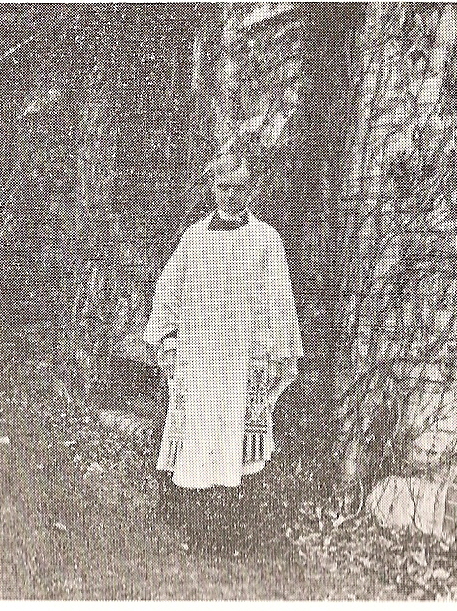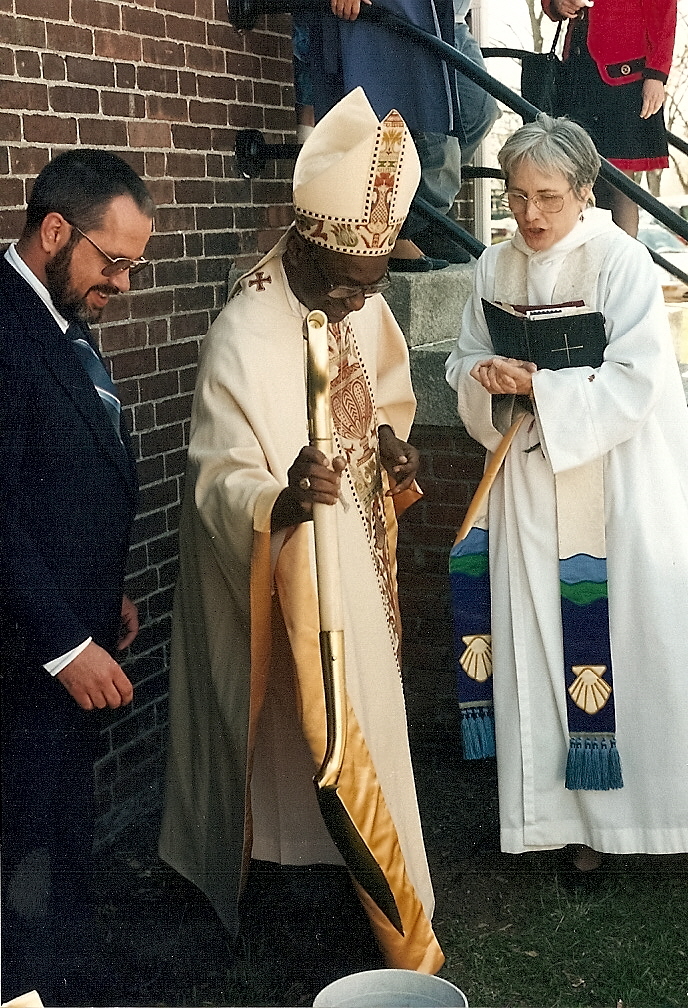|
The Reverend James H . George Jr. - Priest in charge 1913-1916 |
Under the leadership of Father George, and his assistant, Deaconess1 Caroline Stanford, membership in the church grew, and on Easter Sunday of 1920 records shows an attendance of 225.
In 1921 a plaque listing WWI veterans from St Paul’s parish was installed in the back of the church. In 1922 the present day Vicarage was purchased for $4,000 and additional $3,000 was need to make it in usable condition.
In April of 1926 a new wing was completed on the church, expanding the kitchen, adding a Guild Room,2 and adding a new entrance to the church hall.
January 1931, due to ill health, Father Drowne the rector was forced to resign. There would be no resident priest at the parish for the next 24 years.
In the 1930’s, with the coming of the Great Depression and decline of the textile industry in New England, St Paul’s Parish fell on hard times. In 1936 Lawton Mill (a large textile mill and a major employer in Plainfield) was closed putting many local people out of work. The hurricane of 1938 caused damage to the church further increasing the financial burden of the parish.
During much this time (1931-1955), the parish was administered by the rector of St Philip’s Parish in Putnam.
In June of 1955, The Reverend Deacon Kenneth Kinnern became the first resident clergyman at St Paul’s in 24 years. His salary was paid partially by the diocese, with the agreement that the church would take over complete financial responsibility as soon as possible. Under the
leadership of Deacon Kinnern (who was ordained to the priesthood while serving at St Paul’s) the parish once again began to flourish, both spiritually and financially. Father Kinnern left St Paul’s in June of 1958.
Record show a steady amount of activity at St Paul’s in the next couple of decades. The chronic shortage of priests and money gave the parishioners many challenges, and the parish had its ups and downs, but always managed to survive.
In the 1980’s, the diocese discussed a “Cluster “arrangement for three Episcopal Churches
in Northeast Connecticut. This would entail having 2 priests in 3 churches, with the three churches sharing the priest’s salary. The three churches would be St Paul’s Plainfield, St Alban’s Danielson and St Philip’s Putnam, and would be known as the Quinebaug Regional Ministry. In 1991 St Paul’s vestry officially rejected this idea.





